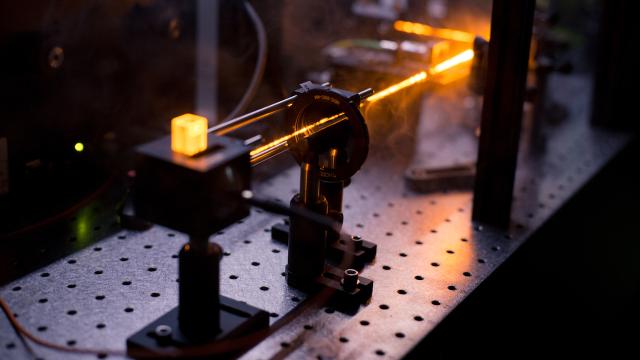Scientists, including those from RMIT, have made a discovery they say could lead to a new generation of accurate, affordable and portable devices to detect concussion, epilepsy and dementia.
The team, led by Fraunhofer Institute for Applied Solid State Physics (IAF) in Germany, developed a laser-based diamond sensor that can measure magnetic fields up to 10 times more precisely than standard techniques.
What does this mean exactly? Well, the innovation could help improve on existing magnetic-field sensing techniques for mapping brain activity to identify disorders.
Diamond is already used for sensing magnetic fields, where the amount of light that comes from quantum defects in the diamond changes with the strength of the magnetic field.
The problem with today’s approach is that most of that light is lost, RMIT explained.
“Our breakthrough was to make a laser from the defects,” RMIT University expert in diamond sensing technology, Professor Andrew Greentree, said.
“By collecting all the light – instead of just a small amount of it – we can detect the magnetic field 10 times more precisely with our sensor compared with current best practice.”
Today’s magnetoencephalography, or MEG, technology is very sensitive, but also bulky, expensive to install and needs to operate at ultra-cold temperatures with liquid helium and patients must remain still.
“Current MEG machines are huge devices, with dedicated facilities, and they require magnetic shielding around them as well,” Greentree said.
MEG technology based on the new diamond-laser sensor would be much smaller than today’s devices, would operate at room temperature and could be fitted to patients who can move around.
“We really want to have something that we can place on a patient’s head and we want them to be able to move around – and there’d be no need for expensive liquid helium to operate such a device,” he added.
Greentree explained that with this MEG technology, early-onset dementia could be found quickly, and with epilepsy, it could find out where it’s occurring, and that would help to better target interventions.
While they’re not quite there yet, RMIT said this discovery could see the development of a proof-of-concept device using their new sensor – within five years.
While the initial focus is on sports injuries, epilepsy and dementia, RMIT said the research is also relevant to a range of sectors beyond healthcare, including mining, where it could lead to improved mineral exploration applications.
‘Magnetic-field-dependent stimulated emission from nitrogen-vacancy centers in diamond’ is published in Science Advances.
